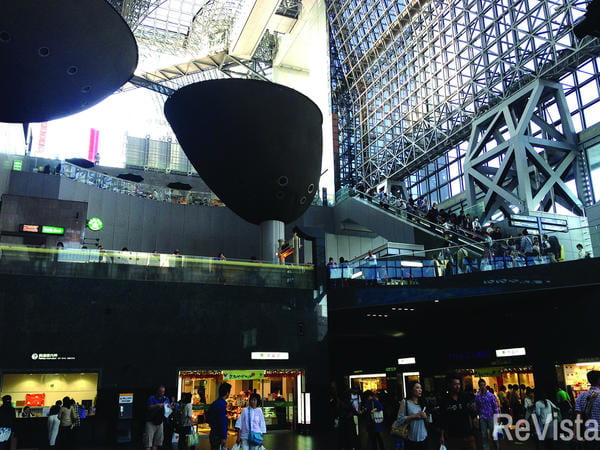What Connects Two Worlds Apart?
For much of my academic career, I’d focused on the faraway lands of Europe. But then, about eight years ago, I acted on an impulse to expand my research horizons to the even farther away lands of Latin America. This move received great support from my home School of International Studies at Peking University.I went through a period of intensive Spanish language training and then read broadly about the region. My understanding gradually broadened further through communication with colleagues and friends from Latin America. After 2013, I ventured to visit more than twelve countries in the region and with each trip, my curiosity grew stronger.
I began to notice how different Latin America was from Europe. While in Europe diversity is highly concentrated in small spaces, the opposite is true in Latin America, where a strong sense of identity among different groups prevails even when people might seem quite similar to outside observers like me. The staggering income inequality, complex ethnic relations, changing political culture, tortuous economic development, profound social transformations and broken historical processes all left a deep impression on me. Of course, there are also outstanding works in humanities and arts, as well as fascinating geographical formations and changing natural landscapes.
For a scholar from East Asia, exploring Latin America is relatively a rare opportunity given to the physical distance and cultural differences which limit contacts between our two regions. Even when two worlds are far apart, it seems that innate curiosity always drives inquiries into foreign people and objects—but it is never easy to build mutual, in-depth understanding of each other. Even time and space are working against us; winter and summer, day and night are both diametrical opposites in East Asia and Latin America. While relations between the two regions are growing ever closer, I want to take a retrospective look into that process of getting close to each other from the beginning.
Research indicates that China and Latin America did not have direct interactions in the written history before modern times. The real contact began at the beginning of the 16th century, after Christopher Columbus discovered the New World and Vasco da Gama opened a new route to Asia. At this point, the main transport channel between Europe and China shifted from land to sea. Relations between China and America began to slowly emerge through trade—with Manila as a hub. Later, in the 19th century, and more specifically between 1800 and 1874, a large number of Chinese contract laborers went to Latin America. Hundreds of thousands of these migrants moved to the region during this period, mostly between 1847 and 1874, the first time large groups of Chinese people arrived there. Four other waves of immigration ensued, with mainly free immigrants arriving on Latin American shores between 1890 and 1930. Another wave followed from 1949 to 1950, mostly made up of either senior Kuomintang officials or of those who sought to open their own businesses. In the 1960s and 1970s, more migrants came from Hong Kong, Taiwan and South East Asia. The background of new immigrants after late 1970s was relatively diverse, with some choosing to make Latin America their new home, while others were bent on reimmigrating to places such as North America (United States, Canada) and Europe. The largest numbers of overseas Chinese are concentrated in South and Central American countries, such as Peru, Brazil, Ecuador, Venezuela, Panama, Argentina, Costa Rica and Surinam. Most of these migrants are engaged in business, software, manufacturing, construction, the service sector and the resource industry.
While people-to-people exchanges have a long history, the establishment of the People’s Republic of China in 1949 is a turning point for official and academic exchanges. Post-1949 China-Latin America relations can be divided into three periods, the first between 1949 and 1970. China’s initial interest in Latin America was driven by a shared affiliation with third world liberation movements. After 1959, the situation changed. On January 1, 1959, the Cuban revolution succeeded; in September, China issued a joint communique with Cuba on the establishment of bilateral diplomatic relations, Cuba becoming the first Latin American country to do so with the New China. In the context of the Cold War and the aftermath of the Sino-Soviet split, a struggle for leadership of the international communist movement emerged and China began paying special attention to Latin America.
After the 1970s, more Latin American countries established diplomatic relations with China, prompting a need for greater mutual understanding. Overall, this first period of bilateral relations was shaped by historical (Cold War) and ideological (revolutionary) factors. The second period of official relations was between the 1970s and the late 20th century. In these decades, the international system went through substantial political, economic and social changes. China and Latin America were experiencing reform and development at the same time. Most Chinese scholars focused on resolving practical problems and they paid most attention to Latin America’s opening up and economic adjustment, comparing it with China’s post-1978 reforms. Other topics that attracted their interest included Latin America’s development strategy, paths and models, as well as social justice movements, democratization, political and ideological changes.
The 21st century can be viewed as the third period of China-Latin America relations. Globalization and market forces, somewhat surprisingly, have tightly bound China and Latin America from two different ends of the world. Economic interdependence and cooperation has reached unprecedented levels. China has already become Latin America’s most important Asian trading partner, and it is actively promoting the integration of the Belt and Road Initiative and the region’s development strategy. In recent years, with the acceleration of China’s economic and social transformation, the country has started paying closer attention to case studies from Latin America on issues such as the middle-income trap, urbanization and inclusive growth. Nowadays, “Latin American Fever” and “China Fever” seem to be on the rise. Any combination of topics related to “ China-Latin America”—from trade to politics, society, diplomacy, history and humanities—has not surprisingly become pivotal for both parties as they seek to jointly develop tighter bilateral relations.
Like China, the two other major East Asian economies, Japan and South Korea, are increasingly developing connections to Latin America based on their own historical background and current needs. Japan’s first “encounter” with Latin America was triggered by immigration—the flow of people broke geographical barriers. The earliest record of Japanese immigrants arriving in Latin America dates from 1893, when 132 Japanese plantation workers moved from Hawaii to Guatemala to work on coffee and sugar plantations. As Japan confronted a shortage of land for its workers at the time, it began to encourage immigration to Latin America. The first government-supported wave of migrants went to Mexico in 1897. Two years later, Peru received its first batch of Japanese immigrants. In the early 20th century, Japan sent another batch to Brazil, attracted by its coffee boom. Statistics show that nearly 190,000 Japanese migrants came to Brazil between 1908 and 1941. This trend was interrupted during World War II but restarted shortly after and continued until the 1960s when Japan’s economy entered a period of rapid growth.
Meanwhile, the economic relationship between Japan and Latin America became the main pillar of their relations. Japan began to import large amounts of energy, minerals, industrial raw materials, as well as cotton, coffee and other agricultural products. This rapid increase of imports was accompanied by direct Japanese investment in Latin America. During the 1960s and 1970s, more than a quarter of Japan’s overseas investment went to the region, mainly towards the heavy equipment industry. After the oil crisis broke out in the 1970s, Japan’s investment in Latin America expanded to iron ore, soybeans, copper, petroleum, aluminum, pulp and paper and other exports. Japanese loans were also crucial to its relations with the region. However, the Latin American economy experienced turmoil in the 1980s, and Japan experienced stagnation in the last decade of the 20th century, prompting a decline in both Japanese imports and direct investment. Although Japan and Latin America gradually grew apart economically, a new “encounter” took place at that time. Like the first “encounter,” it was also driven by the flow of people, but in the opposite direction. To address increasingly serious labor shortage caused by declining fertility and aging population, the Japanese government amended its immigration laws, allowing overseas-born Japanese to obtain long-term residence permits. Many migrants from Latin America returned to Japan, with the number reaching around 300,000 at its peak.
History shows that Latin America has often provided solutions to Japan’s domestic problems. Of course, this relationship is also equally important to Latin America since Japan has played a dual role in providing labor and capital while importing products and natural resources from the region. Japan’s economic recovery in recent years and the overall stabilization of economic development in Latin America, as well as its growing importance in global value chains, have contributed to a new strengthening of bilateral economic relations. Japan has become an observer of the Pacific Alliance, a regional trading bloc aiming at forging stronger economic ties with the Asia-Pacific region, and signed Economic Partnership Agreements with three of the Alliance’s four member countries (Mexico, Chile and Peru). Nevertheless, as Japan’s economic structure has evolved from manufacturing to global supply chain management, its demand for natural resources and imports of large-scale production has substantially decreased; hence, Latin American countries mostly position themselves as attractive destinations for Japanese investment at present. In Brazil and Mexico, the top two Latin American economies, the amount of direct investment from Japan is much higher than that of China and South Korea.
Compared to China and Japan, South Korea engaged with Latin America rather late. In the early 1960s, because of its limited land and a lack of natural resources, the South Korean government began to encourage immigration to Latin America; the intended purpose of this policy was primarily to target land development on the continent. In 1962, South Korea implemented the overseas emigration law, with the first 103 Korean migrants setting off to Brazil. Many of them were urban middle-class, including businessmen, military officers and doctors. From then until 1968, before the Brazilian government banned agricultural immigrants, four waves of Koreans went to Brazil. Argentina was another destination for agricultural immigrants. In October 1965, 78 Korean immigrants arrived in Buenos Aires. Between 1970 and 1977, about 200 more Korean families moved to Argentina. Many of these migrants aimed to develop land but they were unsuccessful in both Brazil and Argentina. They lacked experience, funds, agricultural knowledge, as well as necessary skills and facilities. Local production conditions were different and the new countries’ agricultural policies were unstable. Faced with failure in the countryside, most agricultural migrants then settled in urban areas.
Korean migrants who came to Latin America after the 1980s were mostly investors, mainly concentrated in the fields of retail and wholesale clothing production. At present, about 100,000 Korean migrants live in Latin America, around half of them in Brazil with other relatively large communities in Argentina, Mexico, Guatemala and Paraguay. The overall number of these migrants remains stable, but their mobility within Latin America is high. Such movements are mostly driven by economic or business incentives, but cultural values, religion, family and social connections are also important factors. In addition to immigration, two other factors have attracted South Korea’s attention towards Latin America. The first stemmed from concern about South Korea’s domestic politics—many of its scholars researched democratization processes in Latin America. They used the replacement of military regimes with democracies as an insightful point of reference. Until now, South Korea’s Latin American scholars demonstrate a high degree of concern exists about issues related to Latin American political development. The second factor relates to the Korean business community; Latin America is both a key exporter of raw materials and a lucrative and rapidly developing export market. Since the 1990s, bilateral trade volumes have grown tremendously. Similar to the trade framework between China and Latin America, South Korea’s commerce also primarily involves imports of commodities, including iron ore, energy resources and agricultural products, while exporting manufactured products. Most of its exports are vehicles and auto parts, followed by electrical machinery, mechanical appliances, optical and medical equipment, steel and others. To further facilitate trade and ensure a steady supply of natural resources, South Korea has signed Free Trade Agreements (FTA) with Chile, Peru and Colombia since 2004, and concluded FTA negotiations with six Central American countries (Nicaragua, El Salvador, Honduras, Costa Rica, Panama and Guatemala) in 2016.
South Korea’s direct investment (FDI) in Latin America has increased significantly in the past 30 years, and now accounts for more than one-tenth of its total FDI in the world. Most investment was in the manufacturing and mining industries, with Brazil, Mexico and Peru as the main destinations. At present, electronics is a key area of South Korean investment in Latin America, with Samsung and LG the two major investors. Most recently, direct investment in the automotive industry has also grown rapidly, led by Hyundai and Kia. South Korea’s investment in Brazil is mainly market-seeking. Investments in Mexico are driven by its proximity to the United States, contributing to global value chain cooperation. Unlike with Brazil and Mexico, South Korea’s engagement with Peru is mostly focused on energy and mining.
Thus, immigration and economic cooperation have long been two main pillars of East Asian relations with Latin America, and will continue to play an important role in the future. Meanwhile, with continuing globalization and the deepening of mutual exchange, the ties between the two regions will inevitably expand from the flow of people, goods and capital to other areas, influencing politics, culture and historical processes at large. While the Pacific Ocean will always separate East Asia and Latin America, our peoples are growing closer. Former Chilean President Michelle Bachelet once shared a childhood fantasy, stating that if Chileans keep digging down in the ground, they will eventually reach China. For a long time, geography has prompted us to see each other merely as exotic, mythical and magical places. However, reality is sometimes only one step away from magic. East Asia and Latin America are still far away, yet closer than ever before and I believe that there are more wonderful exchanges to come between us in the future.
Fall 2018, Volume XVIII, Number 1
Guo Jie is an associate professor with the School of International Studies at the Peking University, China.
Email: angel_pku@hotmail.com;
guojie@pku.edu.cn
Related Articles
Youth in Postwar Guatemala: Education and Civic Identity in Transition
What happens when young people must simultaneously grapple with an uncertain future burdened with the legacy of conflict, violence, and impunity? Michelle Bellino provides some answers to a question that echoes throughout many conflict-affected areas, Guatemala in…
Social Policy Expansion in Latin America
The welfare state emerged in middle-income countries in Latin America during the first half of the 20th century when health care services and pensions were granted to workers with formal sector jobs…
The Migrant Photography of Haruo Ohara
Japanese began migrating to Brazil 110 years ago, becoming probably the most prosperous minority group in Latin America and certainly the largest Nikkei community in the globe. In 2008,





